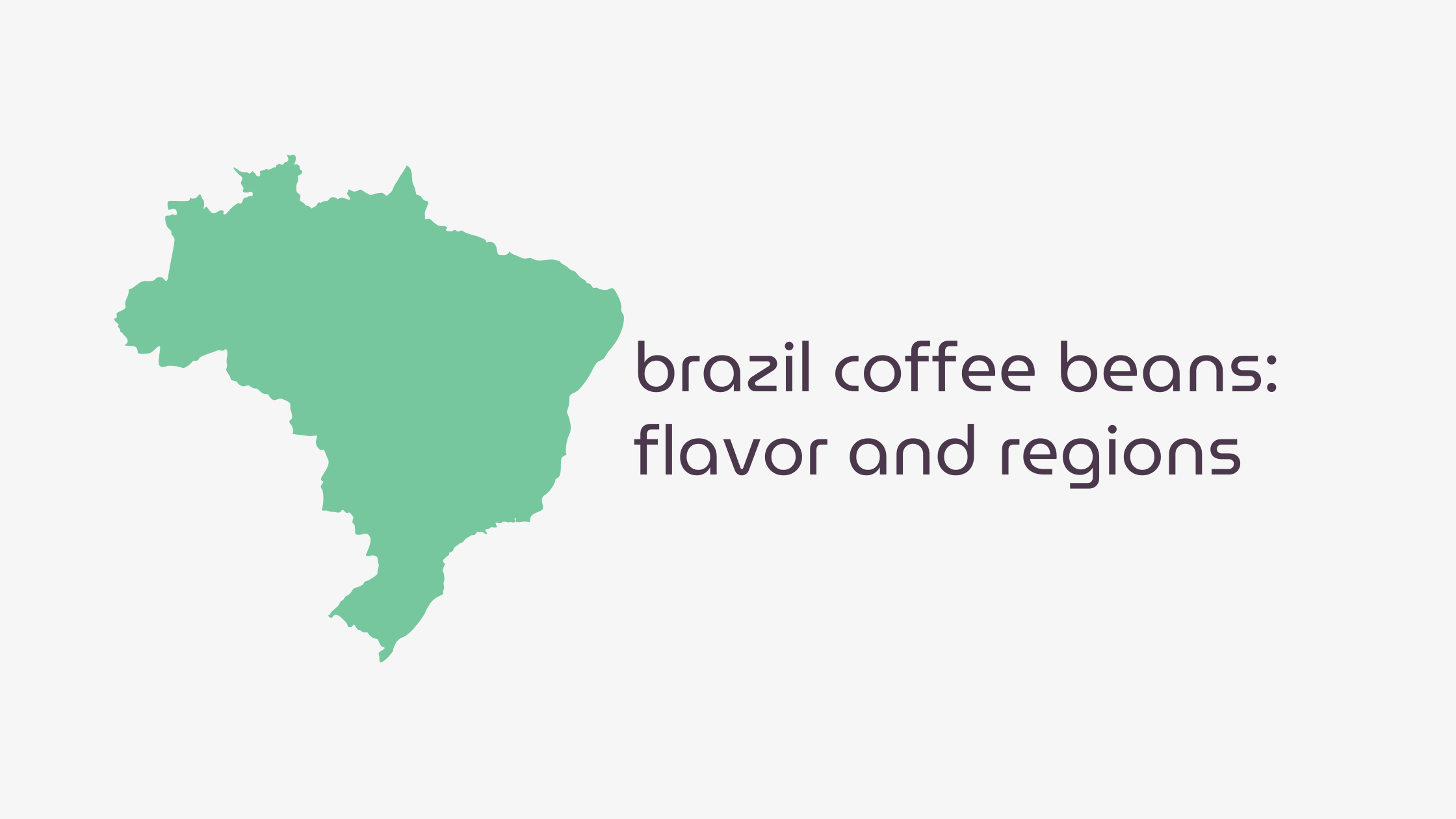
Brazil Coffee Beans: Flavor, Regions & Why They Matter
Brazil coffee beans are smooth, chocolatey, and globally loved. Learn why Brazil is the world’s top coffee producer—and what makes its beans so distinct.
They’re not just common—they’ve become the backbone of the global coffee supply chain. Brazilian coffee beans are grown across famed regions like Minas Gerais, Mogiana, and Serra Negra, and they consistently deliver the kind of smooth, mellow flavor that works beautifully in both single origin offerings and signature blends.
With their approachable taste and reliable quality, it’s no surprise they’ve become a favorite among specialty roasters and everyday coffee lovers alike.
But what gives Brazilian coffee its global appeal? And why does it play such a central role in the coffee industry?
Let’s explore what sets these beans apart—by flavor, region, and impact.
What Makes Brazilian Coffee So Distinct?
Brazilian coffee tends to be smooth, low in acidity, and easy to enjoy—whether you’re just getting into coffee or you’ve been brewing for years. Flavors typically lean toward chocolate, nuts, caramel, and a gentle fruitiness, especially when naturally processed.
Brazil’s relatively flat terrain allows for widespread mechanical harvesting, which contributes to efficiency and consistency at scale. That consistency is a big reason why Brazilian beans show up in so many blends—and why so many roasters rely on them as a foundational profile.
📚 Brazil is the world’s largest coffee producer—responsible for roughly 40% of global output according to Solidaridad (2024).
Looking to try it for yourself? Happi Brazil is a great place to start.
Brazil’s Role in the Global Coffee Trade
That massive production scale gives Brazil outsized influence on global pricing and availability. Whether it’s in a diner mug or a high-end café, there’s a good chance Brazil played a part in the cup.
Because Brazilian beans are so balanced and smooth, they’re often used as a base in espresso blends and breakfast roasts. But when roasted with care and sourced with intention, they also shine as single origins—especially from regions like Mogiana, Sul de Minas, or Bahia.
📚 The National Coffee Association notes that consumers are increasingly seeking higher-quality, traceable blends over generic supermarket coffee.
Brazilian Coffee Growing Regions
Brazil’s coffee-growing landscape is vast, spanning sun-drenched plateaus, volcanic hillsides, and tropical microclimates. Here are the top regions to know—including Serra Negra, home to the beans in Happi Decaf.
Minas Gerais (Sul de Minas, Cerrado Mineiro, Serra Negra)
- Sul de Minas: Rolling hills, mild weather, and altitudes up to 1,200m. Coffees from here are classic: nutty, chocolatey, and full-bodied.
- Cerrado Mineiro: Dry climate and large-scale farms allow for consistent quality and mechanical harvesting. Flavor-wise: clean, sweet, and balanced.
- Serra Negra: In southern Minas, this volcanic-soil region produces smooth, creamy coffees with naturally low acidity—ideal for decaf and blends.
São Paulo (Mogiana)
Along the São Paulo–Minas border, Mogiana’s high elevations create structured, flavorful Arabicas with notes of chocolate, raisin, and soft fruit.
Espírito Santo
A humid, hilly region that grows both Arabica and Robusta (Conilon). Expect more rustic, herbal, and earthy notes, especially in the Arabicas.
Bahia
A newer specialty region with high-tech farming and advanced irrigation. Coffees from Bahia are often bright, floral, and fruit-forward—perfect for light roasts.
Other Mentions: Paraná & Rondônia
Paraná was once a major player but has slowed due to climate issues. Rondônia continues to grow Robusta, often for commercial use or espresso crema.
The Taste of Brazilian Coffee
If you’ve ever described your coffee as “chocolatey,” odds are it came from Brazil. Most beans from Brazil are:
- Low in acidity
- Medium to full-bodied
- Nutty, chocolatey, and smooth
That makes them versatile across brew methods—from drip machines to French presses to balanced, creamy espresso shots.
How Brazilian Coffee Is Processed
Most Brazilian farms use the natural (dry) process, where beans are dried with the cherry still on. This results in sweet, full-bodied, and fruit-accented cups.
Some farms—especially in Bahia or Cerrado Mineiro—also use pulped natural or washed processing to create cleaner, brighter profiles (Perfect Daily Grind).
Why Brazilian Coffee Works So Well in Blends
Brazil’s consistency and smoothness make it an ideal base for coffee blends. It adds:
- A mellow, chocolatey foundation
- Sweetness without sharp acidity
- Consistency across harvests and seasons
That’s why you’ll often find Brazilian coffee in our signature blends.
Choosing the Best Brazilian Coffee Beans
Key things to look for:
- Region: Minas Gerais, Mogiana, or Serra Negra
- Process: Natural = sweet/heavy | Washed = clean/bright
- Roast: Medium = nutty/chocolatey | Dark = bold/smoky
Best brew methods:
- Drip or French press for smooth, balanced cups
- Espresso for low-acid crema and full body
Quick Region Reference Table
| Region | Flavor Profile | Elevation | Process Type | Notes |
|---|---|---|---|---|
| Sul de Minas | Chocolate, nutty, caramel | 900–1,200m | Natural, Pulped | Classic specialty profile |
| Cerrado Mineiro | Sweet, balanced | 800–1,300m | Natural | Clean, great for blends |
| Serra Negra | Smooth, creamy, nutty | ~1,000m | Natural | Ideal for decaf; low acidity |
| Mogiana | Chocolate, raisin, fruit | 900–1,100m | Natural, Washed | Great for espresso |
| Bahia | Bright, floral, fruity | 1,000–1,200m | Pulped Natural | Innovative & light-roast friendly |
Conclusion
Brazilian coffee beans have earned their reputation for a reason. They’re smooth, dependable, and incredibly versatile—whether you’re brewing a mellow morning cup or pulling a bold espresso shot.
From the nutty depth of Minas Gerais to the bright florals of Bahia, there’s a flavor for every type of coffee drinker. And with low-acid options like Happi Decaf, even caffeine-free drinkers can enjoy the signature smoothness Brazil is known for.
Want to explore further? Try Happi Brazil or browse our full Single Origin Coffee Guide to dive deeper into origin-driven flavor.

